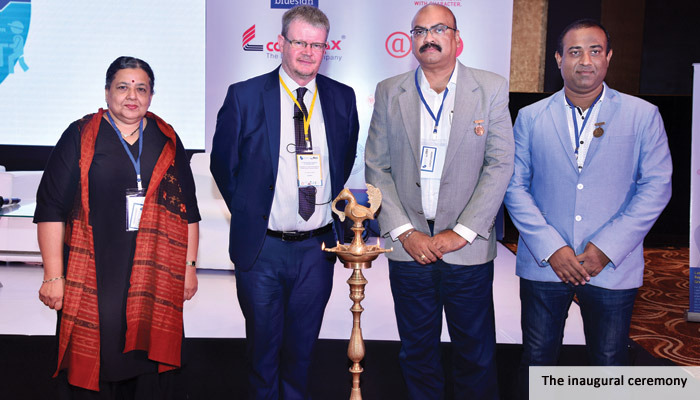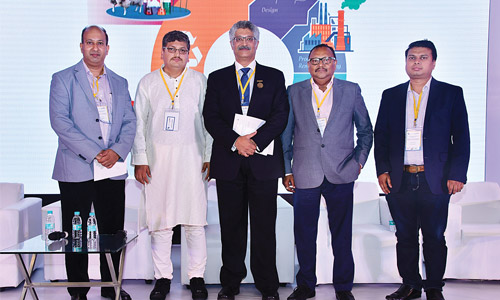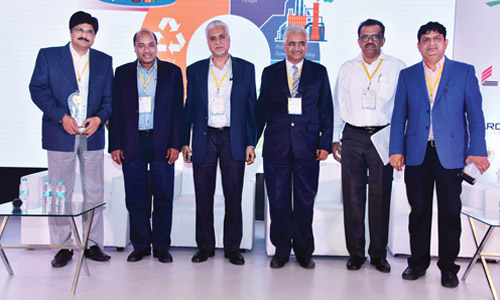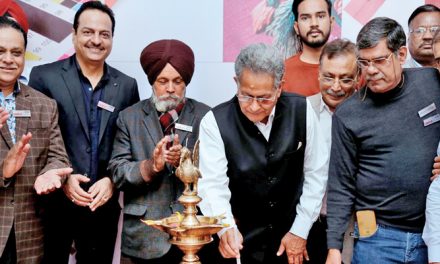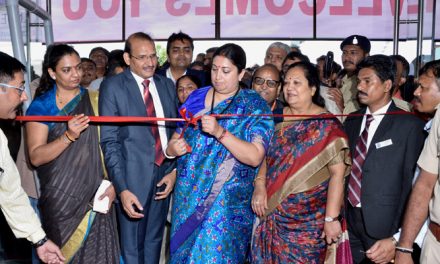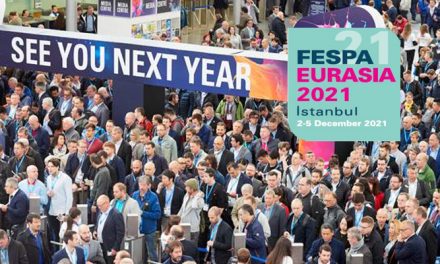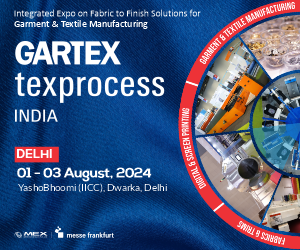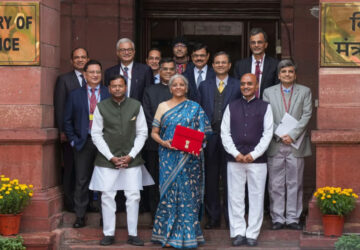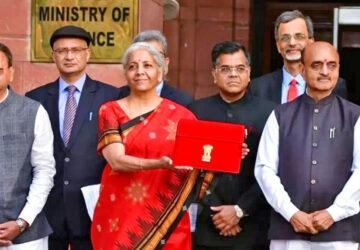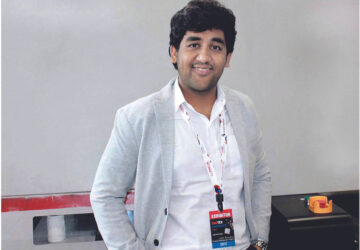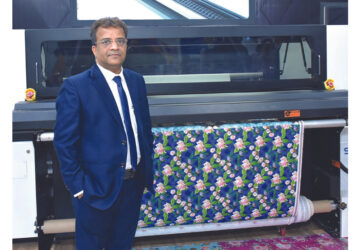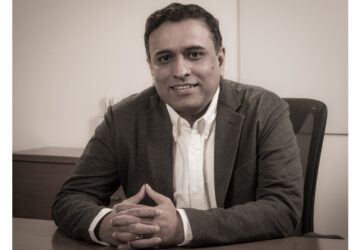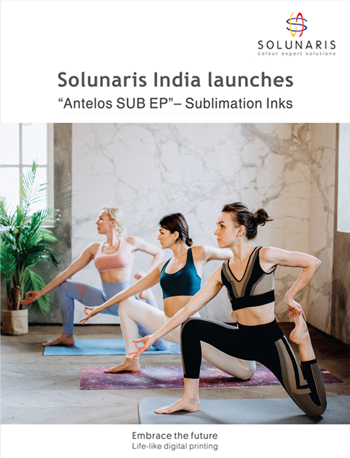The SDC EC organised the 13th International Conference on “Innovations in textile technology and fashion towards Circular economy” on June 6, 2018 at Hotel Sahara Star, Mumbai. The aim was to bring together and share innovation in the areas of chemical compliance, certification, fashion and business in the textile supply chain. More than 200 delegates from process houses, brands & retailers and fashion & technical educational institutions participated in the event.
SDC EC’s Hon. Trustee Naresh Bhatt was the master of ceremony (MOC) of the day. In the inaugural session Hon. Chairman, V R Sai Ganesh formally welcomed all the guests, speakers, panelists and the delegates to the conference. He gave an overview of the theme of circular economy and briefly explained the programme for the day. The intention of involving companies for carrying out CSR activities was communicated to the audience. A minute’s silence was observed in the memory of Prof. Ian Holme who was a true visionary for SDC in India and was instrumental in starting the SDC Mumbai Regional Chapter in 1999.
Later the Souvenir was released; this was followed by felicitations and presentation of medals and qualifications. The CCol qualification certificate was presented to Dr. Ruma Chakrabarti ASDC CCOL and ASDC certificate was presented to JK Shrivastava ASDC. After this, Dr. Graham Clayton, CEO, SDC UK shared his view and plan for ‘SDC –Global Vision’. The SDC has now moved onto a concept of an online virtual learning environment by conducting online courses which contain updated ASDC module material. The format of this is very much designed to meet the needs of todays’ learners with mobile and 24/7 access, containing manageable material to enable students to ‘earn and learn’. Other material is also available via the Colour. Network site will enhance the Colour Education of many around the world. Emphasising on the Conference theme, he said for an organisation or company to find smart solutions, it needs to look at three areas: People, operations and technology. The latter is often seen as smart solutions alone. Technology can be exciting and ground breaking.
Chief Guest of the event Manish Mandhana, Joint Managing Director, Mandhana Industries Ltd., addressed the audience. He talked about the harmful impact of garment manufacturing and discharge of effluents in environment. He emphasized on waste management, audits, unions, committees, safe working environment, facilities to workers in industries and our responsibilities as a citizen. He also talked about CSR aspects of business and his experiences.
At the end of the inaugural session, Dr. Suman Mundkur, Hon. Secretary, SDC EC proposed vote of thanks and acknowledged the sponsors’ and patrons of the conference with mementoes. The conference was supported by CHT India (P) Ltd, Bluesign Technologies ag, X-Rite India (P) Ltd, Zenitex, Colourtex Industries (P) Ltd, Atul Ltd, ATE (P) Ltd., Indian Chemical Industries and Ramp Impex. Support from Archroma India (P) Ltd, Mirachem Industries, Netflex towards CSR activities was acknowledged.
Rahul Bhajekar explained the topic saying that materials include chemical certification which is a new concept that required site inspection for chemical factories. Legislation was needed regarding liquid waste and solid waste, as well as for fibre manufacturing units. Sustainability from production to disposal was important. Dr. Siva was of the opinion that a more systematic approach to management sustainability Certification for mills fibre manufacturing will lead to less fatigue. He emphasised on the large gaps in certification on sustainability- gap in production for domestic and export markets. Aich talked about the current scenario of effluent discharge by textile industries, REACH norms are now for both domestic and export brands in India. He emphasied on GOTS approved chemical processing for larger manufacturers for chemicals and enzymes. He talked of the challenges in reducing the number of washes thus reducing water consumption in dyeing.
Effluents produced by printing paste, recycling of polyurethanes used as blend in many garments spandex/Lycra also contribute in increasing the amount of effluents and how eco-friendly/Energy consumption certification can help in reducing the production of
effluents. Pote talked about sustainability which includes People (safety of workers and consumers), Environment (effluent and waste) and Resources (used in production). Textile is the second largest polluting industry. The manufacturer of textiles, dyes and auxiliaries have to ensure that there is no negative impact on people, environment and resources.
Dr. John started with current status of Maharastra’s industry pollution. He told that many companies in Taloja were given show cause notice for closure. Now it’s high time to upgrade this industry, CTP, ground water pollution levels are raising and by upgrading textile companies. Bhajekar concluded the discussion with positive note that Indian industries certifications are at their teenage years, if pharma companies can do it why not textile companies?
This was followed by a second Panel Discussion on Dyes & Chemicals Compliance – Way forward which was moderated by Prasad Pant, Director-South Asia-Zero Discharge of Hazardous Chemicals (ZDHC).The panel members were Dr. Naresh Tyagi, Chief Sustainability Officer-Aditya Birla Fashion and Retail Ltd, Dr.Pankaj Desai, Head R&D-Colourtex Industries (P) Ltd, Dr. GVG Rao, President-Colors Division Atul Ltd; Dr. Yoram Benjamin, Technical Head-Jay Chemical Industries Ltd, Sanjay Harane Sr. Vice President (Operation) – Nagreeka Exports Ltd.
Dr. GVG Rao gave an overview of energy and process sustainability projects implemented by Atul for Vat, Sulphur black and other dyes and the on-going environmental sustainability projects. Valorisation of by-products is the key for success. He explained using the example of PFC free durable water repellent, the importance of public awareness and regulations for commercial success of environmental friendly chemistry. Dr. Benjamin elaborated on the need for correct understanding of restricted substances list by both dyes and chemical manufacturers and textile processors to differentiate between complete usage ban and limits of tolerance for certain inputs. Pankaj Desai suggested that we follow the best managements of inputs and processes, reduce the use of heavy metals during production which will help in reducing the quality of ground water.
Sanjay Harane spoke on Chemical compliance, cost, and input chemical control by CMS-i.e., Chemical Management System, and Reduction of non-productive outputs (NPO’s) i.e., dyes, use of resources, chemical consumption, missing systems, low priorities, and lack of knowledge. He talked about CMS – policies and practices, chemical storage and handling and waste management, Product Stewardship Programme, sustainable design of industry. Product Design Stewardship is relation with reduction in pollution. It helps in reducing power and salt, fuel and air consumption. Dr. Naresh Tyagi talked about brands and retails. They are not using Azo dyes for dyeing processes. He emphasized on sustainable chain between manufacturers–suppliers-consumers.
A technical presentation on Circular Economy: Innovations in design and supply chain management by Felix AK Pinto – Sales Director, South Asia, South East Asia & ANZ, X Rite India Pvt. Ltd. He highlighted the importance of colour and helping the brands in selecting the right colour. He mentioned the challenges in the production process and total appearance capture system that consist of camera that can scan the object from every angle, helps in visualising the product. He introduced the Pantone cloud- its tools and concept of 3-D object making that can reduce the cycle of prototype and sampling in garment industry that can help in reducing waste.
A Panel Discussion on Innovative fashion – towards circular economy followed. This was moderated by Dr. Ela Dedhia, Associate Professor and Head – Department of Textiles and Fashion Technology, College of Home Science Nirmala Niketan. The Panel Members were Viral Desai, CEO, Zenitex; Krishna Mehta, Creative Director, Brand ‘Krishna Mehta’; Geeta Castelino– Educationist and Consulting Psychologist; Puneet Dudeja, Sales Director-South Asia, WGSN.
Dr. Dedhia introduced the topic by saying traditionally Indians used sustainable practices by hand-me-downs, reuse and recycling of garments, fabrics and products – leading to circular economy. Krishna Mehta showed how Innovative Fashion- Towards Circular Economy can be achieved in relation to garment development. She shared some of her creations from waste or discarded fabric swatches like curtains, dresses etc. She also explained about sustainability in relation to fast fashion. Geeta Castelino stressed the importance of training and educating the various stakeholders on sustainability. It was important to consider safety and interests of workers in mills and industries Viral talked about his experiences as entrepreneur, Health campaigns, CSR activities of his company, Green India concept that contribute to help sustain fashion.
Puneet talked about saving resources, recycling of products, working on concept of re-usability of product. He gave example of Mudd jeans of Netherlands and Korean company where they marketed used denims and home furnishings after finishing them- recycling them. The session concluded with the importance of rematerialisation of fabrics and garments.
The next Panel Discussion Session was on Sustainable Business Strategies – Way forward, which was moderated by GV Aras, Director, Textile Engineering Group, A.T.E. Pvt. Ltd. The Panel Members were Dr. VG Habbu, Senior Vice President, Reliance Industries Ltd.; Suketu Shah, President and Business Head, Mafatlal Industries Ltd.; Sandeep Mehta, Textile Technocrat, SNM Consultants (P) Ltd.; Amir Shiekh – Gherzi Consulting Engineers (P) Ltd. Dr. Parasu Veera Uppara, Vice President and Head of Technology and Business Development, Speciality Chemicals, United Phosphorous Ltd.
GV Aras introduced and explained the relevance of the topic and the difference between sustainability and sustainable development. Aras also introduced the new concept of ‘Triple bottom line’ for measuring the performance of the corporate on financial, social and environmental basis. Dr. Habbu explained the importance of packaging in every sphere. He went on to explain the virtues of plastics packaging, but how overuse of packaging is harming the nature. He talked about polyester and its versatility. Shah talked about sustainability in relation to denim production. Denim production is not eco-friendly because of use of non-soluble dye, use of foam dyeing techniques, example of H&M brand for recycling of its products, chemical certification from GOTS, water consumption in producing 1 pair of jeans, changes in denim production, etc.
He shared his knowledge on present technologies used in denim production for which industries have denim shredding machine which converts denims into fibre form and can re-manufactured into denims. Uppara talked about value chain, indigo denim dyes, production of indigo in India, sourcing dyes from China, need for Indian Indigo and dye companies, concept of green chemistry i.e. zero water system, small processes and innovative use of water. Sheikh talked about sustainable business opportunity, global environment, investments, vision of individual, mass customization and ways of sustainable designing of products.
Mehta talked about digital printing in India still in its growing phase at 15 per cent, business model, selling and printing, inventory control, Surat textile market, Ecommerce, Example of Arvind Mills that they have separate division for Flex and Banner printing and development, affordable machineries, etc. On innovative ideas in business, Dr. Habbu gave examples of how manufacturers of US/Europe are outsourcing manufacturing of goods, change in consumer behaviours and increase in demand for micro-runs. In relation to micro fibre issues, the industry currently is not a linear economy.


